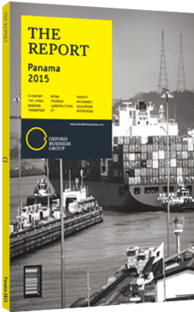More skilled workers are needed in Panama
The overall unemployment rate in Panama increased from 4.1% in 2013 to 4.8% in 2014. This included 3.5% (or 61,616 people) who were openly unemployed and an additional 1.4% (or 24,289 people) assessed as being in the “hidden unemployed”, according to figures published by the National Statistics Agency. Nearly two-thirds of the absolute increase in the number of jobless people in 2014 was accounted for by just four sectors: hotels and restaurants, construction, manufacturing and the public service. In the first three of these, the increase in unemployment was due to a slippage in overall activity. In the case of the public service, the loss was due to the transition from the administration of Ricardo Martinelli to that of Juan Carlos Varela following the elections. Unemployment of men at the end of 2014 (at 4%) was lower than that of women (6%).
A Positive Trend
Nevertheless, the longer-term trends have generally been positive. The overall unemployment rate is down from 6.5% in 2010: open and hidden unemployment rates have dropped from 4.7% and 1.8%, respectively.
Further, most relevant metrics in the country are favourable by the standards of Latin America. In the 2012-13 period, the percentage of the total population that was actually employed was 72.7% in Panama, as compared to 65.7% for Latin America as a whole, data published by the Economic Commission for Latin America and the Caribbean and International Labour Organisation shows. In relation to the numbers of people who are employed in the formal sectors of the economy, the figures are 91.1% for Panama and 81% for the wider region. Some 86.7% of workers in Panama have some social security coverage, while this is true of only 78.7% of workers across the region. Each of these metrics has improved in Panama since the early 2000s.
It is also noteworthy that average monthly salaries in Panama grew by 6.5% in 2014: this was primarily due to a rise in the minimum wage, which came into effect at the beginning of that year. The impact appears to have been greatest in rural areas.
Country Assessment
However, businesses’ perceptions of Panama’s labour market are mixed. According to the “Global Competitiveness Report 2014-15” from the World Economic Forum (WEF), the inadequate education of the workforce (with a weighted 15.2% of survey responses) and restrictive labour regulations (10.5%) are the second- and fourth-most-problematic factors for doing business in Panama. While the country is assessed as being the 48th-most-competitive country out of the 144 reviewed by the WEF, it ranks 87th overall for the efficiency of its labour market. This is despite the fact that Panama is rated 19th for its ability to retain talent and 13th for its ability to attract talent. The main challenges at the moment appear to be the gender imbalance in the workforce in favour of men (113th), the flexibility of wage determination (106th), and pay and productivity (101st).
The country is rated as 100th for its reliance on professional management. In other words, Panama does not just attract (senior) foreign workers: it needs them. In 2014 the authorities issued work permits to 12,141 foreigners, which was slightly more than the average of the preceding four years (including 2012, when the corresponding figure was 12,757). Of the most recent total, some 23% of permits were granted to the spouses of Panamanian nationals. Some 16% were granted to businesses in accordance with rules that permit them to allocate up to 10% of positions to foreigners. Another 13% were granted to citizens of countries with which Panama has bilateral arrangements. Looking forward, it is likely three trends will continue: incomes will grow faster outside Panama City as authorities seek to boost inclusive growth; improvements to education will remain a priority to increase the availability of skilled workers for small businesses; and government will be committed to labour mobility.
You have reached the limit of premium articles you can view for free.
Choose from the options below to purchase print or digital editions of our Reports. You can also purchase a website subscription giving you unlimited access to all of our Reports online for 12 months.
If you have already purchased this Report or have a website subscription, please login to continue.

